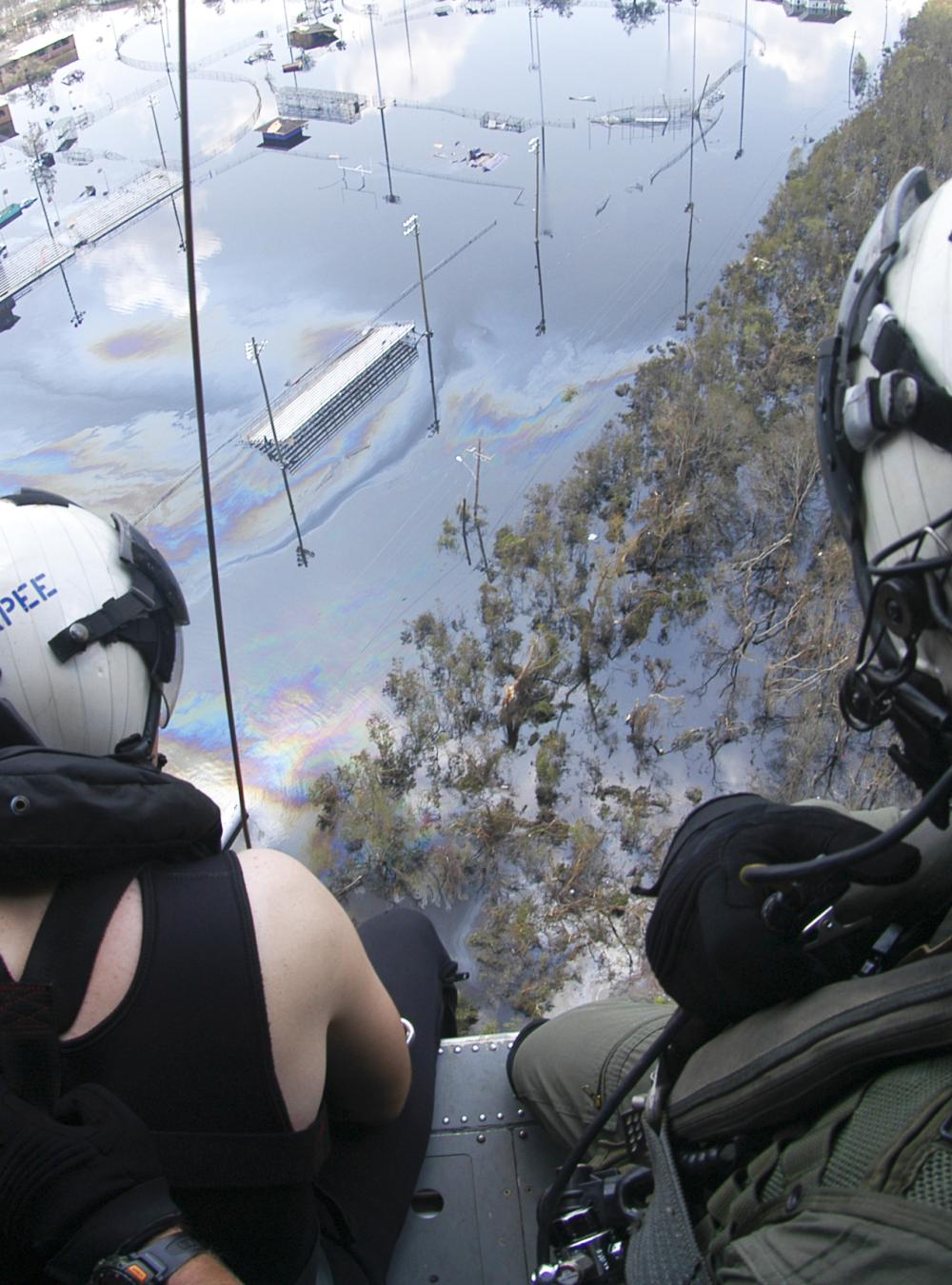Deterring threats to the nation requires a whole-of-government approach. Behind the scenes, MITRE aids defense-civilian agency collaborations, from communications support for crises to stopping global adversarial actions—before they reach U.S. soil.

Many Partners, One Mission: Protecting North America
“Whenever the military is called to support civilian authorities, it’s usually under challenging conditions where normal capabilities are unavailable,” says MITRE’s Kevin Garlock.
The year 2021, for example, has brought no shortage of extreme weather. In the Atlantic alone, coastal areas narrowly avoided the wrath of Tropical Storm Ana. Three months later, Hurricane Ida wreaked havoc—and an estimated $95 billion in damages—across the eastern U.S.
Such threats—ranging from natural disasters to terrorist attacks to COVID-19—can significantly degrade the capacity to protect our nation.
Beyond the tragic loss of life and property, these events affect the government’s ability to maintain critical infrastructure, carry out search and rescue operations, and deploy military capabilities.
Special circumstances like these can require bridging military operations to help with domestic activities. That role falls to U.S. Northern Command (NORTHCOM), the DoD organization that ensures defense support to civilian authorities when needed.
“MITRE’s been involved in prototyping, testing, and improving military response capabilities for NORTHCOM for a few decades now,” says Garlock, who leads integration of our homeland defense work across the company. (Although the word “homeland” is often associated with the Department of Homeland Security, the DoD plays an important role as well).
“These capabilities provide the baseline to enable the military to operate with its forces and with civilian authorities. It’s a mission born after 9/11 that continues to grow to this day.”
The effort also involves ensuring all the players can talk to each other in austere environments—a concept known as interoperability.
First used in real-time during Hurricane Katrina, these interoperable communications packages help DoD support federal, state, and local civilian operations when crisis strikes.
Forging the Future of Homeland Defense
MITRE’s work enabling military support to civilian activities has evolved considerably over the years. Our assistance to NORTHCOM, along with the North American Aerospace Defense Command (NORAD), also extends to assessing threats and shaping strategies for protecting North America.
This includes integrating critical command and control capabilities to enable the military to operate under even the most trying conditions.
Conditions like those in the Arctic, where we’re helping to address communication challenges that can leave us vulnerable to potential adversaries. Our experts are collaborating with the Department of Homeland Security, U.S. Navy, and others to demonstrate and transition key capabilities.
Given our unique vantage point and experience managing multiple federal R&D centers, MITRE’s well-positioned to help the DoD deter threats to North America.
Sometimes the threat is a conventional one. Like a cruise missile headed for U.S. soil. To support missions such as cruise missile defense, we’re using our platforms, MITRE Labs, and independent research programs to identify tools, data sets, and expertise to shape analytic methodologies.
For example, MITRE engineers provided NORAD, the Missile Defense Agency, and the U.S. Air Force with an architectural analysis of the effectiveness of various weapons, sensors, and command and control systems.
“This data-informed analysis is helping shape key government decisions about what to do and where to invest,” Garlock says.
Other times, the threat is more non-traditional, requiring heightened collaboration between the defense community and civilian sectors.
“Most of DoD’s missions inside the U.S. are dependent on critical infrastructure, which is largely in private or non-DoD public hands,” Garlock adds. “We need resiliency for critical infrastructure components that support our domestic well-being and enable our military to operate globally.
“That means coordinating efforts to deter others from initiating some sort of attack.”
MITRE’s experience working across government, industry, and academia, along with our unbiased perspective, allow us to guide such collaborative work.
Looking ahead, we’re helping NORTHCOM shape a homeland defense design for the future. Through the evolution of Global Information Dominance Experiments, we’re pursuing globally integrated operations across combatant commands to battle worldwide threats.
Such a holistic approach is key to protecting the U.S. against myriad threats—conventional and unconventional, current and emerging.
Additional reporting by Jim Chido